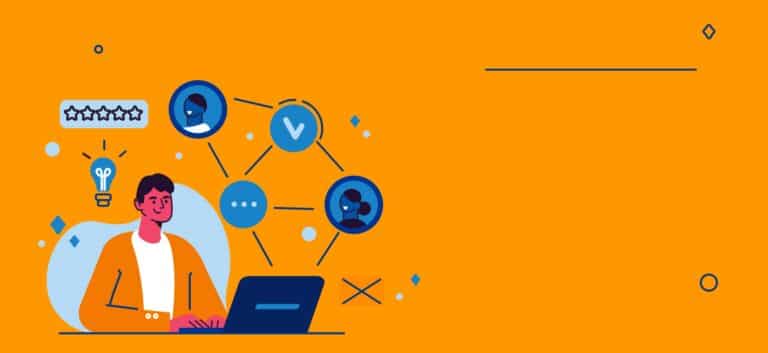SHARE
Uncertainty caused by the Covid-19 pandemic has dramatically altered consumer behaviour, as people adjust to a tangled web of movement control restrictions while reeling from a global economy in shock. For companies who place strategic importance in attracting new customers and retaining existing ones, monitoring trends in customer behaviour is fundamental to improve customer experience (CX), which keeps businesses growing. In this article, we highlight five major consumer behaviour trends that are shaping how today’s consumers spend their cash, and offer insights on how to leverage this knowledge to improve CX strategies in the new normal.
1. A Shift from Luxury to Necessity
Consumers have shifted their spending towards essential items during the pandemic, prioritising items of value rather than big investments or luxury purchases. A McKinsey survey revealed that consumers around the world are less optimistic about economic recovery in the aftermath of Covid-19 and are therefore decreasing their spending on discretionary expenses such as travel or clothing.
An EY survey revealed the four consumer segments that have emerged since the Covid-19 pandemic began:

Thirty-five percent of those surveyed would save and stockpile as they are uncertain about the future and are concerned about their families, 27% of those surveyed revealed deep cuts to their spending habits, as they are the hardest hit by the pandemic. The last two categories, stay calm and carry on, and hibernate and spend, are those that have enough financial resources to survive the pandemic and therefore generally spend more across all categories.
Similarly, a global study revealed that in the US, shopping frequency has decreased from 4.4 to 2.8 times a week. Shopping patterns have also been affected. In South Korea, the number of people that reported going grocery shopping twice a week or more dropped from 41.7% to 22%, largely as a result of local lockdowns restrictions and fear of infection.
For some of these essential industries, the pandemic has been a gold mine due to higher demand for goods regularly used in a home-based lifestyle. Improving customer service strategies and offering greater value during each interaction are two ways for companies in these sectors to respond to the higher levels of demand exhibited.
2. Leveraging Choice
With more time and a variety of convenient platforms to choose from, consumers don’t necessarily stick to the same brand as much as they used to. Since the pandemic, over 65% of consumers expressed a high intent to try a new shopping behaviour. Other statistics are even more worrisome for established brands.

A Ketchum study revealed that 45% of consumers have changed at least one brand preference since the pandemic began, and that 62% of consumers expect their brand preferences to change permanently once the pandemic is over. This is alarming news for established brands, who in response, must be swift and diligent in responding with effective customer retention programmes. Solutions should revolve around delivering excellent customer care and strengthening the bond between consumer and brand.
3. A Fully Digital Lifestyle
Have you been binge-watching Netflix since lockdowns have begun? It’s now more common than going to the movie theatres. The proliferation of numerous entertainment, shopping, health, transportation, and food mobile apps have fundamentally changed consumer lifestyles and with it, the retail economy. No longer are consumers flocking to malls to splurge on big ticket items or spending their afternoons enjoying all the entertainment outlets on offer.
Storefronts have now moved digital and even elderly consumers, usually resilient to major lifestyle changes, have now through necessity shifted their consumption online. The moral of the story? A company without a digital presence is missing out on a huge source of revenue!

Want to grow your business online? Scicom Digital helps companies build a robust online presence to make the best use of their digital marketing budget.
4. Breaking from Traditional
With so many constraints being placed on social interaction, consumers are finding innovative ways to live, work, and celebrate in a safe manner. Location-centric events such as weddings, funerals, birthday parties, and other gatherings are more frequently being held virtually on video conferencing platforms like Zoom or Microsoft Teams. Most in-person events now have to be modified in order to adhere to social distancing norms and local Covid-19 regulations.
This trend of improvisation in the new normal has led to changes in consumer demand across a range of industries. For example, as lockdown measures restrict movement for the general population and more employers implement a work-from-home (WFH) policy for employees, the technology industry has seen a rise in demand for laptops and internet routers, the telecommunications industry has seen higher demand for data and connectivity, and the automobile and real estate industries have seen a sharp decline as people are forced to lead more sedentary lifestyles.
In the business process outsourcing (BPO) industry, many companies have had to pivot to work-from-home models which require a well-planned and executed WFH strategy. Scicom’s Global Connect program utilises an effective WFH strategy that leverages digital recruitment, virtual training, remote agent management and top-notch data security practices, which have been essential in strengthening client confidence and maintaining customer satisfaction levels.
As the pandemic carves out new norms and changes in consumer demand, companies should be nimble enough to routinely revise their customer service and WFH policies. This will ensure they are responsive to consumer behaviour trends and any restrictions that may hinder staff recruitment or training.
5. Pent up Demand
Consumers have a tendency to delay spending on expensive goods and entertainment during times of crisis, as they prefer conserving cash and spending on necessities as our first trend above explained. However, economists believe that the economy will snap back sharply like a rubber band, as many consumers have built up considerable savings during these quieter times.
As a result, the airline, tourism, retail, and entertainment industries, which have faced steep declines in consumer demand due to Covid-19 regulations, can expect to see demand return strongly once economies recover. Brands in these sectors are advised to make certain that high quality customer service is consistently delivered to ensure that they remain their customer’s first choice when the economy bounces back.



